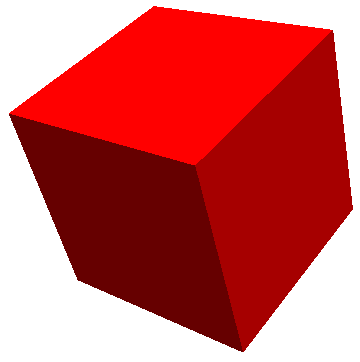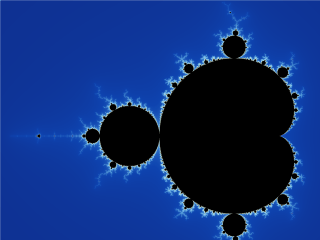|
Mosely Snowflake
The Mosely snowflake (after Jeannine Mosely) is a Sierpiński–Menger type of fractal obtained in two variants either by the operation opposite to creating the Sierpiński-Menger snowflake or Cantor dust i.e. not by leaving but by removing eight of the smaller 1/3-scaled corner cubes and the central one from each cube left from the previous recursion (lighter) or by removing only corner cubes (heavier). Eric Baird, ''Alt.Fractals: A visual guide to fractal geometry and design'' (January 2011), pages 21 and 62-64. In one dimension this operation (i.e. the recursive removal of two side line segments) is trivial and converges only to single point. It resembles the original water snowflake of snow. By the construction the Hausdorff dimension of the lighter snowflake is d_H=\log_3 (27-9) = \ln 18 / \ln 3 \approx 2.630929 and the heavier d_H=\log_3 (27-8) = \ln 19 / \ln 3 \approx 2.680143. See also * Menger sponge In mathematics, the Menger sponge (also known as the Menger cu ... [...More Info...] [...Related Items...] OR: [Wikipedia] [Google] [Baidu] |
Jeannine Mosely
Jeannine Mosely (born May 16, 1953 in Pittsburgh, PA) holds a Ph.D. in EECS from the Massachusetts Institute of Technology, and is known for her work as an origami artist. She is best known for her modular origami designs, especially her work using business cards. She has organized several crowd-sourced origami projects built from tens of thousands of business cards involving hundred of volunteers for each project. She is also known for her minimalist origami designs (such as her fourfold alphabet), curved crease models, and her invention of "or-egg-ami" models made from egg cartons. Education and engineering career Mosely earned a B.A. in mathematics and a B.S. in electrical engineering from the University of Illinois at Urbana-Champaign and a M.S. and Ph.D. in electrical engineering and computer science from the Massachusetts Institute of Technology. For her master's degree she developed algorithms for time-division multiple access (used in cell-phone technology). For her docto ... [...More Info...] [...Related Items...] OR: [Wikipedia] [Google] [Baidu] |
Sierpinski Sponge
In mathematics, the Menger sponge (also known as the Menger cube, Menger universal curve, Sierpinski cube, or Sierpinski sponge) is a fractal curve. It is a three-dimensional generalization of the one-dimensional Cantor set and two-dimensional Sierpinski carpet. It was first described by Karl Menger in 1926, in his studies of the concept of topological dimension. Construction The construction of a Menger sponge can be described as follows: # Begin with a cube. # Divide every face of the cube into nine squares, like Rubik's Cube. This sub-divides the cube into 27 smaller cubes. # Remove the smaller cube in the middle of each face, and remove the smaller cube in the center of the more giant cube, leaving 20 smaller cubes. This is a level-1 Menger sponge (resembling a void cube). # Repeat steps two and three for each of the remaining smaller cubes, and continue to iterate ''ad infinitum''. The second iteration gives a level-2 sponge, the third iteration gives a level-3 sponge, and s ... [...More Info...] [...Related Items...] OR: [Wikipedia] [Google] [Baidu] |
Menger Sponge
In mathematics, the Menger sponge (also known as the Menger cube, Menger universal curve, Sierpinski cube, or Sierpinski sponge) is a fractal curve. It is a three-dimensional generalization of the one-dimensional Cantor set and two-dimensional Sierpinski carpet. It was first described by Karl Menger in 1926, in his studies of the concept of topological dimension. Construction The construction of a Menger sponge can be described as follows: # Begin with a cube. # Divide every face of the cube into nine squares, like Rubik's Cube. This sub-divides the cube into 27 smaller cubes. # Remove the smaller cube in the middle of each face, and remove the smaller cube in the center of the more giant cube, leaving 20 smaller cubes. This is a level-1 Menger sponge (resembling a void cube). # Repeat steps two and three for each of the remaining smaller cubes, and continue to iterate ''ad infinitum''. The second iteration gives a level-2 sponge, the third iteration gives a level-3 sponge, and s ... [...More Info...] [...Related Items...] OR: [Wikipedia] [Google] [Baidu] |
Fractal
In mathematics, a fractal is a geometric shape containing detailed structure at arbitrarily small scales, usually having a fractal dimension strictly exceeding the topological dimension. Many fractals appear similar at various scales, as illustrated in successive magnifications of the Mandelbrot set. This exhibition of similar patterns at increasingly smaller scales is called self-similarity, also known as expanding symmetry or unfolding symmetry; if this replication is exactly the same at every scale, as in the Menger sponge, the shape is called affine self-similar. Fractal geometry lies within the mathematical branch of measure theory. One way that fractals are different from finite geometric figures is how they scale. Doubling the edge lengths of a filled polygon multiplies its area by four, which is two (the ratio of the new to the old side length) raised to the power of two (the conventional dimension of the filled polygon). Likewise, if the radius of a filled sphere i ... [...More Info...] [...Related Items...] OR: [Wikipedia] [Google] [Baidu] |
Cantor Set
In mathematics, the Cantor set is a set of points lying on a single line segment that has a number of unintuitive properties. It was discovered in 1874 by Henry John Stephen Smith and introduced by German mathematician Georg Cantor in 1883. Through consideration of this set, Cantor and others helped lay the foundations of modern point-set topology. The most common construction is the Cantor ternary set, built by removing the middle third of a line segment and then repeating the process with the remaining shorter segments. Cantor mentioned the ternary construction only in passing, as an example of a more general idea, that of a perfect set that is nowhere dense. More generally, in topology, ''a'' Cantor space is a topological space homeomorphic to the Cantor ternary set (equipped with its subspace topology). By a theorem of Brouwer, this is equivalent to being perfect nonempty, compact metrizable and zero dimensional. Construction and formula of the ternary set The Cantor tern ... [...More Info...] [...Related Items...] OR: [Wikipedia] [Google] [Baidu] |
Snowflake
A snowflake is a single ice crystal that has achieved a sufficient size, and may have amalgamated with others, which falls through the Earth's atmosphere as snow.Knight, C.; Knight, N. (1973). Snow crystals. Scientific American, vol. 228, no. 1, pp. 100–107.Hobbs, P.V. 1974. Ice Physics. Oxford: Clarendon Press. Each flake nucleates around a dust particle in supersaturated air masses by attracting Supercooling, supercooled cloud water droplets, which freezing, freeze and accrete in crystal form. Complex shapes Emergence, emerge as the flake moves through differing temperature and humidity zones in the atmosphere, such that individual snowflakes differ in detail from one another, but may be categorized in eight broad classifications and at least 80 individual variants. The main constituent shapes for ice crystals, from which combinations may occur, are needle, column, plate, and rime. Snow appears white in color despite being made of clear ice. This is due to diffuse reflection ... [...More Info...] [...Related Items...] OR: [Wikipedia] [Google] [Baidu] |
Snow
Snow comprises individual ice crystals that grow while suspended in the atmosphere—usually within clouds—and then fall, accumulating on the ground where they undergo further changes. It consists of frozen crystalline water throughout its life cycle, starting when, under suitable conditions, the ice crystals form in the atmosphere, increase to millimeter size, precipitate and accumulate on surfaces, then metamorphose in place, and ultimately melt, slide or sublimate away. Snowstorms organize and develop by feeding on sources of atmospheric moisture and cold air. Snowflakes nucleate around particles in the atmosphere by attracting supercooled water droplets, which freeze in hexagonal-shaped crystals. Snowflakes take on a variety of shapes, basic among these are platelets, needles, columns and rime. As snow accumulates into a snowpack, it may blow into drifts. Over time, accumulated snow metamorphoses, by sintering, sublimation and freeze-thaw. Where the climate is co ... [...More Info...] [...Related Items...] OR: [Wikipedia] [Google] [Baidu] |
Fractals
In mathematics, a fractal is a geometric shape containing detailed structure at arbitrarily small scales, usually having a fractal dimension strictly exceeding the topological dimension. Many fractals appear similar at various scales, as illustrated in successive magnifications of the Mandelbrot set. This exhibition of similar patterns at increasingly smaller scales is called self-similarity, also known as expanding symmetry or unfolding symmetry; if this replication is exactly the same at every scale, as in the Menger sponge, the shape is called Affine geometry, affine self-similar. Fractal geometry lies within the mathematical branch of measure theory. One way that fractals are different from finite geometric figures is how they Scaling (geometry), scale. Doubling the edge lengths of a filled polygon multiplies its area by four, which is two (the ratio of the new to the old side length) raised to the power of two (the conventional dimension of the filled polygon). Likewise, ... [...More Info...] [...Related Items...] OR: [Wikipedia] [Google] [Baidu] |
Curves
A curve is a geometrical object in mathematics. Curve(s) may also refer to: Arts, entertainment, and media Music * Curve (band), an English alternative rock music group * ''Curve'' (album), a 2012 album by Our Lady Peace * "Curve" (song), a 2017 song by Gucci Mane featuring The Weeknd * ''Curve'', a 2001 album by Doc Walker * "Curve", a song by John Petrucci from ''Suspended Animation'', 2005 * "Curve", a song by Cam'ron from the album '' Crime Pays'', 2009 Periodicals * ''Curve'' (design magazine), an industrial design magazine * ''Curve'' (magazine), a U.S. lesbian magazine Other uses in arts, entertainment, and media * ''Curve'' (film), a 2015 film * BBC Two 'Curve' idents, various animations based around a curve motif Brands and enterprises *Curve (payment card), a payment card that aggregates multiple payment cards * Curve (theatre), a theatre in Leicester, United Kingdom * Curve, fragrance by Liz Claiborne * BlackBerry Curve, a series of phones from Research in Motio ... [...More Info...] [...Related Items...] OR: [Wikipedia] [Google] [Baidu] |
Topological Spaces
In mathematics, a topological space is, roughly speaking, a geometrical space in which closeness is defined but cannot necessarily be measured by a numeric distance. More specifically, a topological space is a set whose elements are called points, along with an additional structure called a topology, which can be defined as a set of neighbourhoods for each point that satisfy some axioms formalizing the concept of closeness. There are several equivalent definitions of a topology, the most commonly used of which is the definition through open sets, which is easier than the others to manipulate. A topological space is the most general type of a mathematical space that allows for the definition of limits, continuity, and connectedness. Common types of topological spaces include Euclidean spaces, metric spaces and manifolds. Although very general, the concept of topological spaces is fundamental, and used in virtually every branch of modern mathematics. The study of topological space ... [...More Info...] [...Related Items...] OR: [Wikipedia] [Google] [Baidu] |

.jpg)


.jpg)

